Marcus's report is shown in full below. Look out for the items relating to Shorelarks and the ill fated Brünnich’s Guillemot
26th Nov 2021 – Early Winter Tour, Day 1
Day 1 of a three day Early Winter Tour. The weather forecast wasn’t great, but after some drizzle first thing it proved to be better than feared, cloudy and breezy but mostly dry. When we started out in the morning, it looked like it might be a difficult day, but little did we know just what excitement the birding gods had in store for us!
We met in Wells. It was drizzling pretty steadily, so we decided to have a quick look in the Harbour as there had been a Black-throated Diver reported off the Harbourmaster’s Office late yesterday afternoon. As we drove slowly past, we could see a few Brent Geese and gulls on the edge of the water. A glimpse of a bird disappearing under the water turned out to be a Cormorant when it resurfaced.
We turned round and as we headed back the other way we spotted a diver on the water fairly close in, directly opposite the quay. We found somewhere to stop and got out for a look. It was actually a moulting adult Red-throated Diver, not Black-throated. Particularly in the dull light, the remains of the throat patch looked dark and it was impossible to see any red, but the structure immediately screamed Red-throated Diver, rather slight with a markedly upturned bill. Although the head was still speckled with grey streaks, the eye stood out in the the pale face. We had a nice view of it, diving, as it came past us and headed off up the harbour channel.
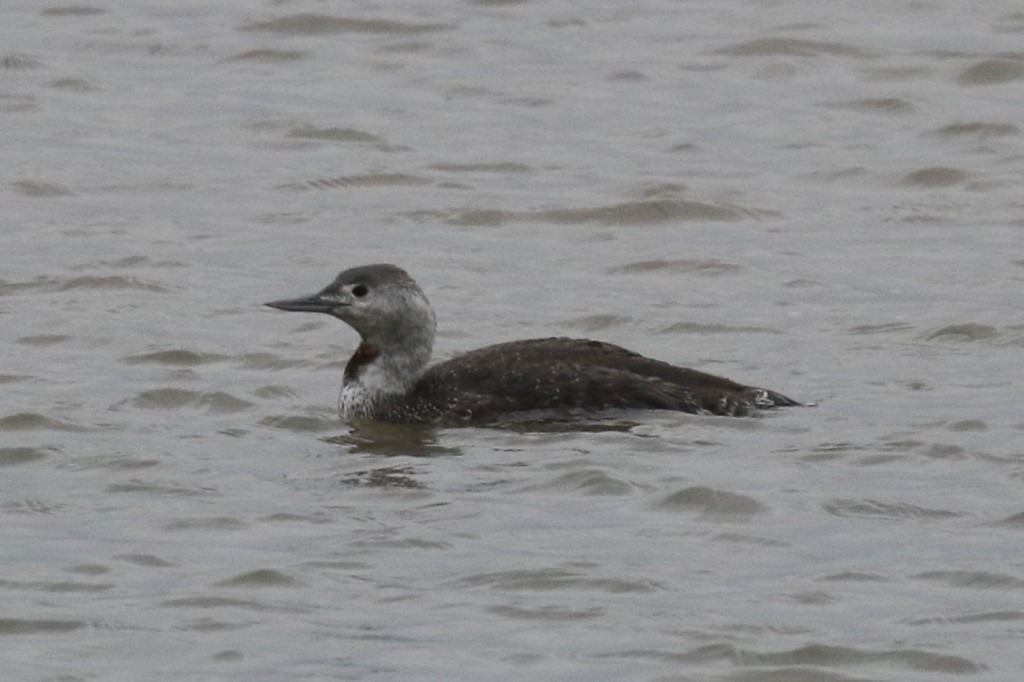
The forecast was for rain all morning and if it was going to continue like it had been we would have to head for somewhere with hides for the day, but the rain seemed to be easing now. As it was going to be very windy over the next couple of days, our preferred option was to go to Holkham for the Shorelarks this morning, so we decided to go for it. We drove round and parked on Lady Anne’s Drive.
A small covey of partridges was feeding just beyond the fence directly in front of where we parked, one Red-legged Partridge with four Grey Partridges. As we got out of the minibus, the Red-legged flew off but the Grey Partridges stayed – they looked up briefly, but quickly went back to what they were doing. We had great views of them, just beyond the fence. Another four Grey Partridges flew in to join them.
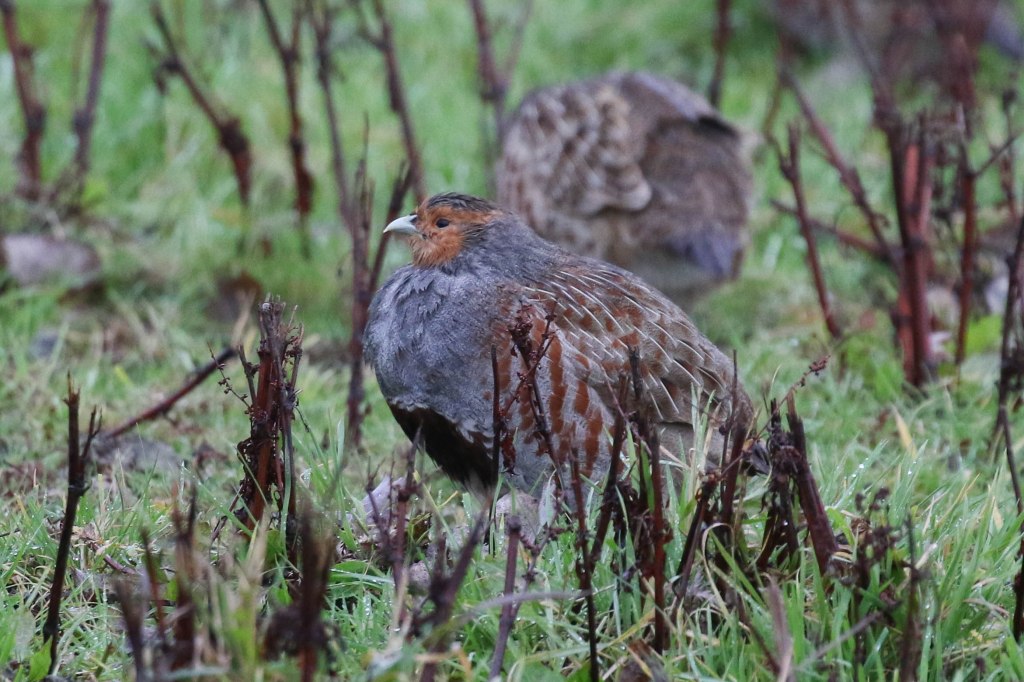
There were lots more birds on the grazing marsh beyond, lots of Wigeon, a couple of Curlew. Further back, we could see a few Golden Plover in with the Lapwings. We could hear Pink-footed Geese calling the other side of the Drive and looked over to see them flying round out over the grazing marsh. Some kronking calls alerted us to a Raven which circled up over the Lookout Cafe, before drifting across the north end of the Drive and over the pines, where it was joined by a second Raven. Still a scarce bird here, so a nice one to see.
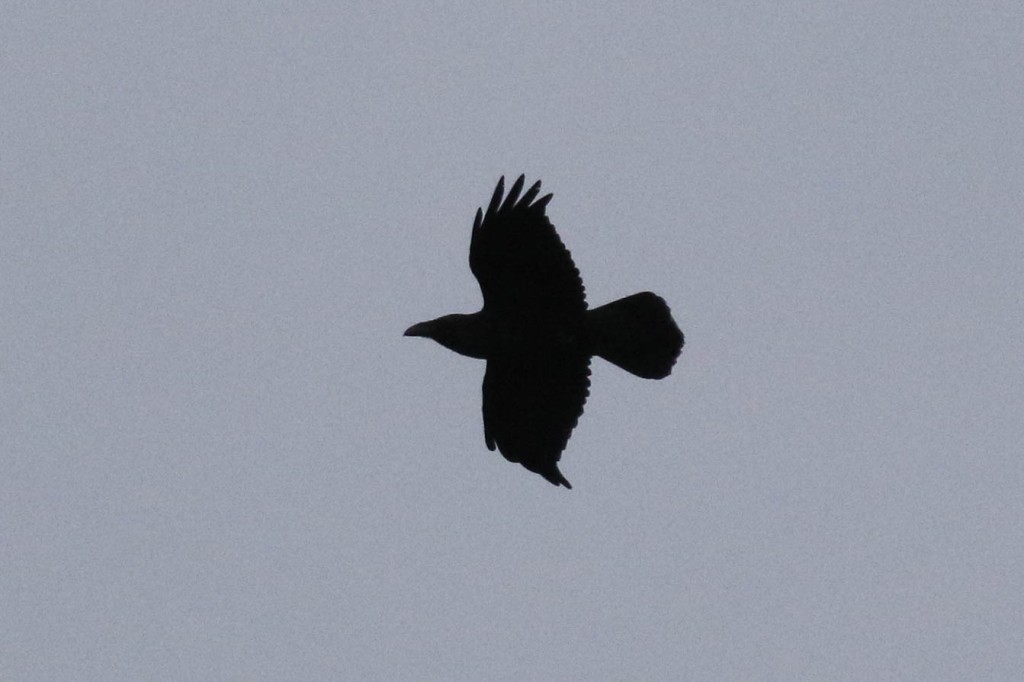
We walked through the pines and out towards the beach. From the boardwalk, we could see a small group of Brent Geese and a few Shelduck out on the saltmarsh. Several Linnets flew up and circled round. As we walked east on the edge of the saltmarsh, it was rather quiet at first, but at least it was sheltered from the wind in the lee of the pines.
As we got to the cordon, we could see two people looking through scopes, so we headed over towards them. As we got a little closer they waved us over – as we suspected, they were watching the Shorelarks. We could only see two Shorelarks at first, as they were quite well back and hidden in the vegetation. Gradually they worked their way closer towards us and eventually we counted all five together. We had great views of them now, picking around the stunted saltmarsh vegetation for seeds.
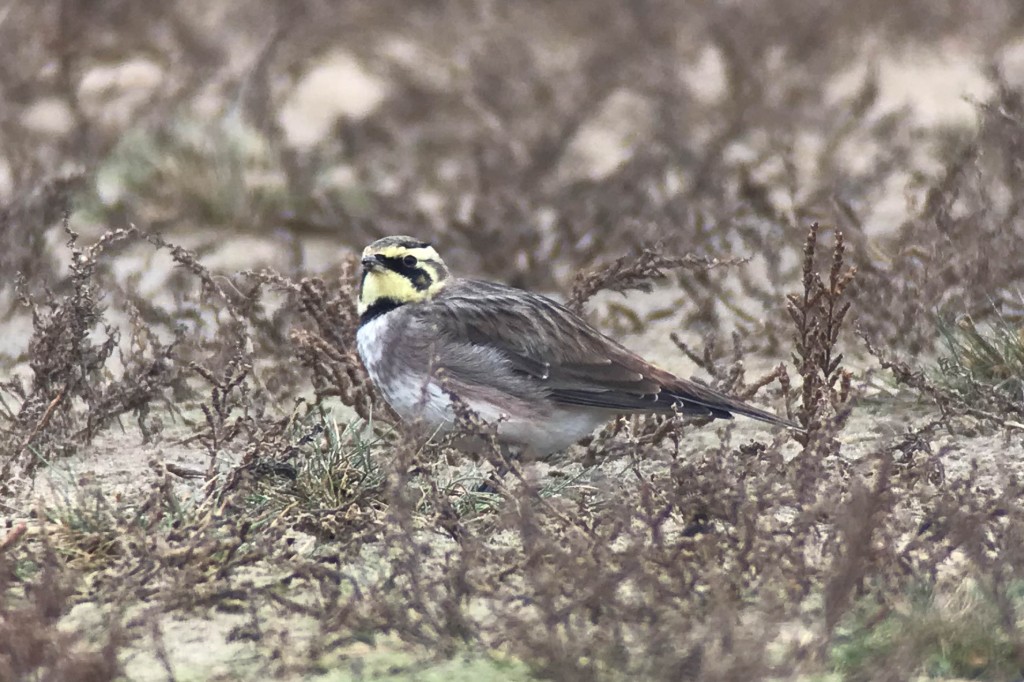
By coincidence, it turned out one of the group knew the two people on the beach from elsewhere, so while they chatted, everyone stopped to watch the Shorelarks. We could see the sea through the gap in the dunes beyond the cordon and it didn’t look too rough yet, so after a while we continued on for a look out at the Bay to see if we could pick up anything out there.
Out on the beach, it was just after high tide so there wasn’t much exposed sand at the moment. We could see one or two Oystercatchers on the shore. A Sanderling was running in and out of the waves away to our right and eventually came right past in front of us, and more small flocks of Sanderlings were flying past.
We turned our attention to the sea. Even though it wasn’t particularly rough, the combination of the high tide and a significant swell meant birds were constantly disappearing into the troughs. There were several Red-breasted Mergansers offshore, with four close in. We could see a few Eider too, and a group of Common Scoter further out. Another more distant flock of Common Scoter flew up from the sea further back, and we could see that the bird at the front had white wing flashes, a Velvet Scoter. The flock landed again and we lost it in the swell.
There were several Great Crested Grebes offshore, but we couldn’t find any other grebes. The first two or three divers we spotted were Red-throated Divers, but then we picked up a Black-throated Diver not too far out. As well as the swell, it was diving constantly which made it hard to get onto, but it was working its way towards us.
We were just trying to get all the group onto the Black-throated Diver, scanning with the scope, when an auk bobbed up from the swell in front. It was only in view for a second, but it looked just like a Brünnich’s Guillemot. But surely it couldn’t be? Brünnich’s Guillemot is a high arctic species, and very rare further south (there have been 48 accepted records in UK, but no confirmed records for Norfolk and only 4 for England!). It rode up over the next wave and it did look just like a Brünnich’s Guillemot!
It was being carried very quickly east on the running tide. So while we tried to get a quick clip of video through the scope, in the hope we might then have some documentary evidence, we tried to get everyone onto it. Thankfully, it was close in and not too hard to see when it rode up and over the breakers, even if it was only in view for a second or two at a time.
The Brünnich’s Guillemot had a noticeable dark head, with pale speckling on the throat. Most Common Guillemots in winter have very pale faces, although even at this time of year some have darker heads too, a pitfall for the unwary. But this bird had very black upperparts too, and looked hunchbacked with a rather angular head. The bill was too short for a Common Guillemot and we thought we could make out a suggestion of the distinctive pale gape line when it caught the light.
Once everyone had seen the bird, we checked the video and fortunately saw that we did have a few seconds footage of it (as well as several more seconds of empty sea!). We managed to get a videograb and, given the enormity of the call, we quickly sent it to a few locals with the question ‘are we going mad’?!
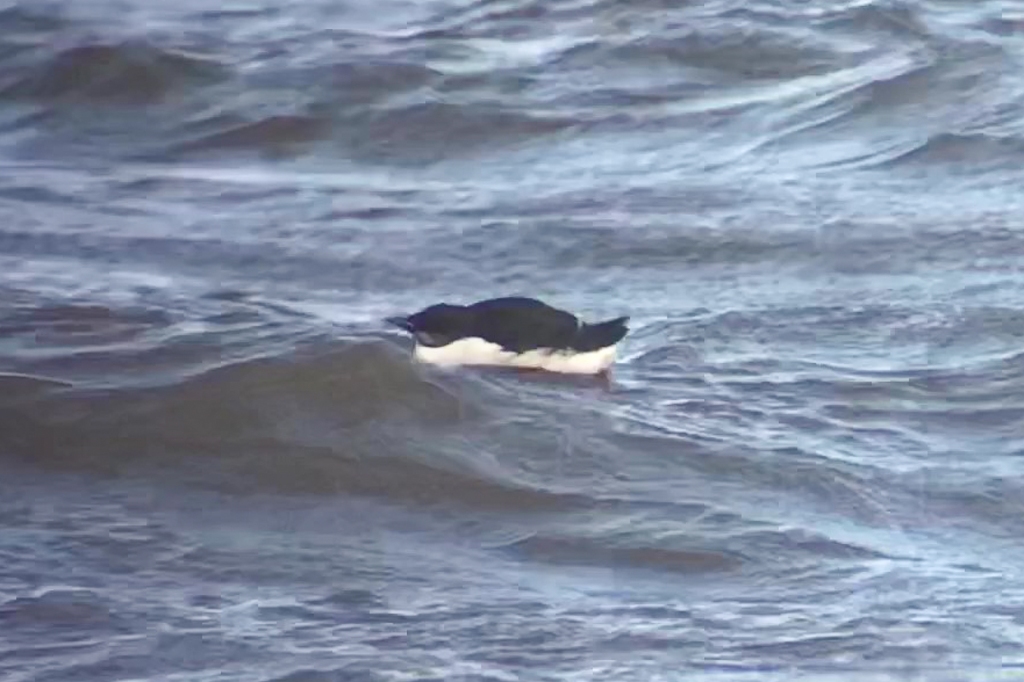
The Brünnich’s Guillemot didn’t look well, it was not diving or attempting to swim against the current. We followed it as it disappeared away to the east and it looked like it would be swept into Wells Harbour. So once we received suitably reassuring comments back, we put the news out hoping it would get refound. Wow – what a moment! Job done, still slightly shell-shocked, we walked back.
A Rock Pipit flew over calling and landed on the edge of the saltmarsh. Back at Lady Anne’s Drive, while we stopped to use the facilities in The Lookout, we scanned the grazing marshes. A Merlin shot across low, scattering all the Wigeon, but was gone as quickly as it appeared. A rather pale Common Buzzard and a Kestrel were more obliging, perched where we could get the scopes on them. A Great White Egret flew up and across briefly.
We thought we might have a quick walk west through the trees before lunch, but just as we were setting off we received a message to sat that the Brünnich’s Guillemot had been refound in Wells Harbour. We decided to go round there instead for another look.
When we got there, there was already a small crowd gathered by the old lifeboat station. The Brünnich’s Guillemot was on the other side of channel, just on the edge of the sandbar. It was definitely not looking well and as we watched was gradually beached by the receding tide, but at least it was still looking round relatively actively.
One of the other locals was arranging a boat to take a few people across to see what the bird was doing, so we arranged places for the group. It was a bit of a rush to get down to the inner quay and by the time we got there, the boatman said that the tide was probably too low now to get us in close. Still we thought we would have a go anyway.
There were several Brent Geese still on the margins of the harbour channel as we motored out. The Red-throated Diver we had seen earlier by the quay was about half way up now, but from the boat allowed us to get very close for some great views. The light was a bit better too now, and we could see that the patch on its neck was indeed dark red. Two Razorbills surfaced next to it briefly too.
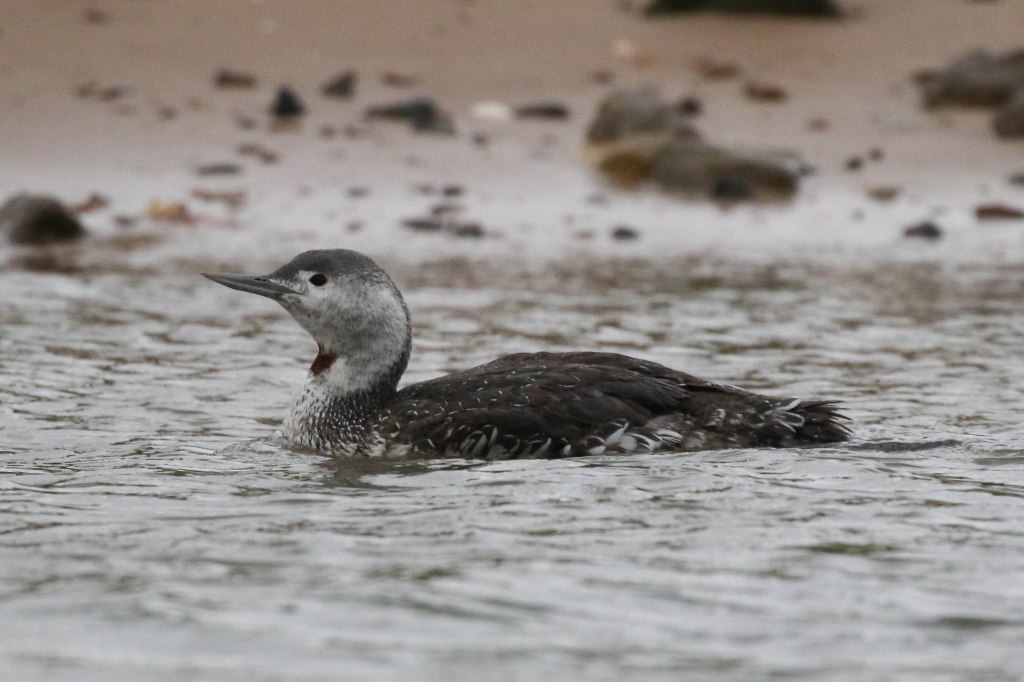
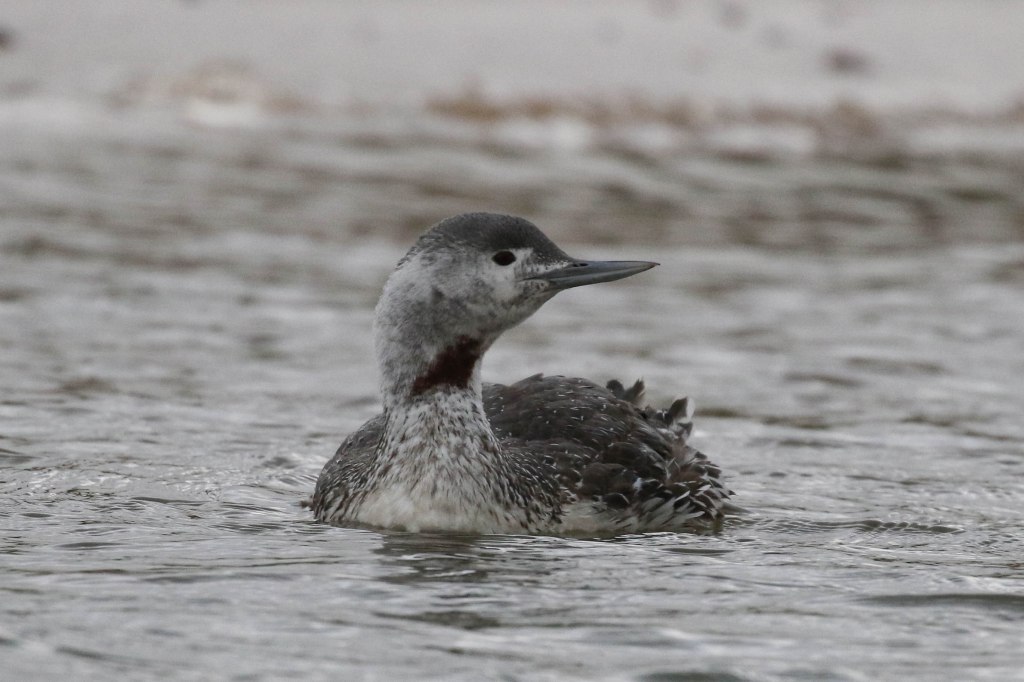
Out past the lifeboat station, the water started to get a bit choppy and the navigable channel took us further away from the sandbar the other side. We could see the Brünnich’s Guillemot still distantly on the sand, now well back from water’s edge. The boatman offered to drop us over on the other side of the channel further back, from where we could walk out to the sandbar, but we were not all really equipped for it and we still hadn’t had lunch. We had no idea when we might be able to get back. So we got ourselves dropped back at the outer harbour, while a couple of the others went over to investigate.
We stopped at the beach cafe for a late lunch and a welcome hot drink. A steady stream of people came to see the Brünnich’s Guillemot, from all over Norfolk. Then the sad news came through that the Brünnich’s Guillemot had passed away. It was perhaps inevitable, but the speed and the reality of it definitely put a damper on the celebrations.
The weather was still OK, and as we might not get another chance this weekend, we decided to have a look at the raptor roost to finish the day. As we walked up the track, we flushed a Sparrowhawk from the base of the hedge. Lots of Starlings flew over, in and out of the pig fields. We started to flush a few Blackbirds out of the hedges, and down at the far end there were more, along with several Redwings flying ahead of us too, we could hear their ‘teezing’ calls. Migrants in from the continent, stopping here to refuel.
It was a bit more breezy out on the edge of the coast path, with the wind gradually swinging round now. We could see small groups of Brent Geese and a few Curlews out on saltmarsh. There were several Little Egrets, and one of the group picked up a distant Great White Egret too.
There were a few Marsh Harriers already in and still hunting up and down, a nice close male and more further out. One Marsh Harrier feeding on something way out on the beach, and two juveniles were looking on from the sandhills beyond the saltmarsh. Out of frustration, they started playing with a stick instead.
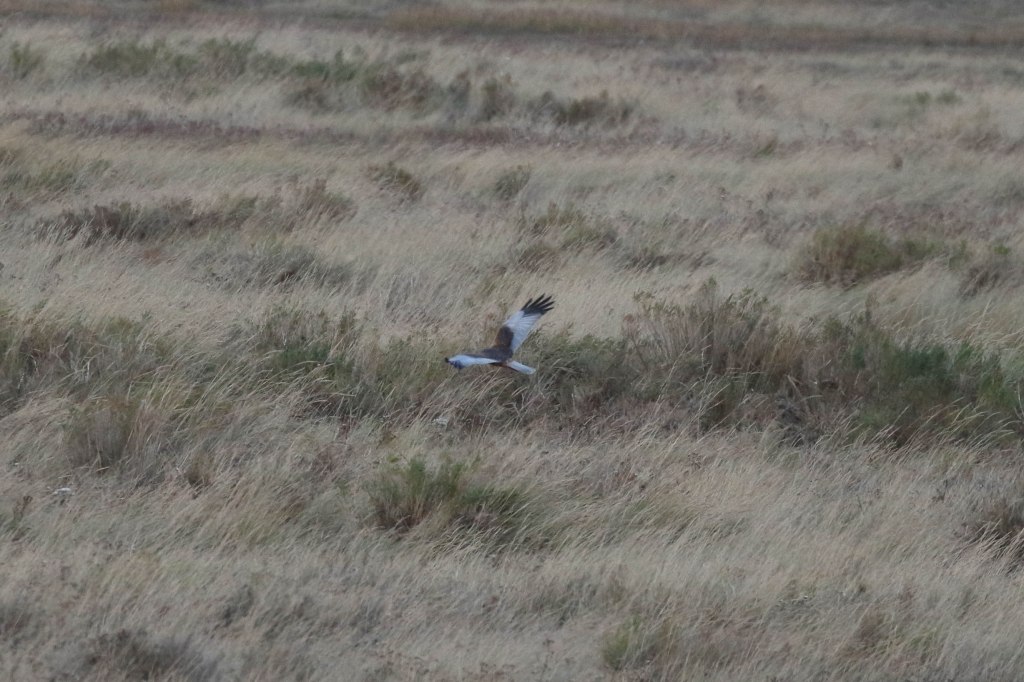
We picked up a ringtail Hen Harrier hunting way off, in front of East Hills, but it was very hard to see and must have dropped down as it disappeared without coming closer. We were just thinking about packing up, when another ringtail flew in from the east. As it worked its way along the back edge of the saltmarsh, a grey male appeared behind it. Presumably the male Hen Harrier had come in early and stayed down, given the wind. The two of them circled round over the spartina for a minute or so, then dropped down again.
It was getting cold now, so we decided to call it a day. What a day it had been!
No comments:
Post a Comment
Note: only a member of this blog may post a comment.